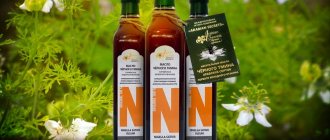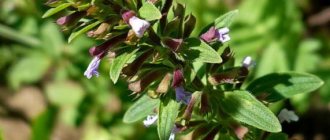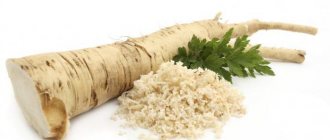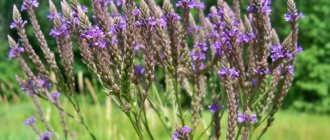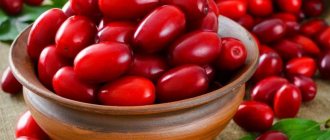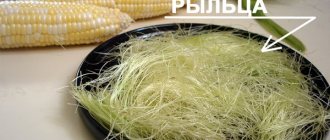Even in ancient times, the title of “king of spices” stuck to black pepper. Today we add a pinch of these tangy ground grains to almost every dish. And once upon a time this spice was worth its weight in gold: it was used as currency, and in some countries it was even given to the gods as a sacrifice. Interestingly, in Sanskrit the name of the spice sounds like “marich”. And that’s exactly what the ancient Hindus called the sun.
What is known today about the properties of pepper? Does it do anything other than improve the taste of our favorite foods? It turns out yes. And the list of beneficial properties is much longer than one might expect.
What is black pepper
Black and capsicum peppers are not at all the same plant, as some might think. Moreover, these crops are not even related in the botanical family.
Content:
- What is black pepper
- Role in history
- How Piper nigrum becomes a spice
- Chemical composition of Malabar berries
- Beneficial features
- Use in folk medicine
- Use in cosmetology and perfumery
- Contraindications and possible harm
- Use in cooking
- How to grow at home
Black pepper (Piper nigrum) is a perennial evergreen vine whose stem can grow 15 m or more. In the wild, it chooses nearby trees or other plants as support. Although on pepper plantations the crop is limited in growth at a height of approximately 4 meters. Piper nigrum is a member of the pepper family and is a so-called “true pepper.” Biologists know about one and a half thousand varieties of peppers, but only 10 of them are used as spices.
Piper nigrum is a plant with heart-shaped, leathery, dark green foliage and small grey-white flowers. Pepper fruits (the same peas used by everyone in the kitchen) are small berries (up to 5 mm in diameter) collected in clusters. As the fruit ripens, the color changes from green to bright red. The length of one brush can reach 14 cm and consist of 2-3 dozen berries. One vine can produce approximately 3 kg of berries per season. The crop produces its first harvest no earlier than the 3rd year, and the peak of fruiting usually occurs 7-9 years after planting.
South India is called the birthplace of this natural wonder. By the way, in some regions black pepper is known as Malabar berry (from the name of the Indian province of Malabar, which, by the way, translates as the land of pepper). And from India this culture spread throughout Asia, Africa, and America. Today, Piper nigrum plantations are grown in various warm countries, but the Indian product collected in the Malabar region is still considered the best. Indian pepper is described as medium-hot but very aromatic. The second most popular is the Indonesian product (its peas are standard size, very spicy and aromatic). The Malaysian spice is not so fragrant, but very hot. Vietnamese is recognized by large gray-brown peas without much aroma, but with a pronounced pungent taste.
Botanical description and habitat of hot spice
The hot spice of pepper is undoubtedly a food product in the form of a flavoring additive that enhances the nutritional value of the dish where it is used, and its species biology is associated with plant origin.
Therefore, the perennial plant black pepper in the form of an elongated climbing vine several meters high belongs to the pepper family and has been grown by man since ancient times to obtain round fruits of small grains with a wonderful smell.
The evergreen tropical vine has:
- long up to 12 m and thick up to 13 mm. a stem with aerial adventitious roots with nodes of above-ground shoots that absorb nutrient moisture from the air,
- from the nodes of the shoots, large ones up to 90 mm alternately grow. ovate leathery leaves with light, small flowers up to 10 cm in diameter, loose inflorescences,
- long up to 140 mm branches of infructescences rounded up to 5 mm. single-seeded green drupes in the amount of 20-30 pieces, turning red as they ripen,
and produces a stable harvest twice a year, for three decades, with an annual productivity of 2.5 kg. peppercorns from one medium-sized vine.
In industrial production, pepper vines climb up artificial supports with a vine height of no more than five meters, so the yield of black pepper from one hectare of mass planting is about 40 tons of dry ripe pepper fruits.
By the way, the green color of pepper fruits is considered mature, which becomes bright red as it ripens, and the first harvest of a pepper plant can be obtained already in the third year, where the maximum amount of grain harvest is produced by industrial plantings at the age of ten years.
South India is considered the homeland of this type of plant with suitable warm tropical habitat conditions, where it grows in almost every yard and is used by the local population everywhere:
- as in the food industry,
- and for medicinal purposes.
As a wonderful spice with unique medicinal properties, black peppercorns have spread throughout the world, capturing the territories of warm countries.
Thus, extensive hot pepper plantations are easily grown in Indonesia, Malaysia and Vietnam, having their own local varieties of pepper.
In ancient times, spicy black peppercorns were a fairly expensive spice that was worth its weight in gold, which is why it was never at risk of changing its price value when weighing various goods. That is, the standard weight of a stable currency replacing cash was considered to be one thousand peppercorns, weighing exactly 460 grams.
From Asia, pepper spice was brought by the great commander Alexander the Great to Europe, where it immediately won universal recognition even before our era.
It is significant that it was in Russia that black peppercorns were the very first spice imported, which later received the name of the king of spices due to the laboriousness of collection and processing.
Fragrant varieties and methods of making pepper spice
The fragrant pepper spice, as an agricultural product of plant origin, is, of course, used in small quantities, giving any seasoned dish a delicate aroma and a slightly light taste, but humanity has not grown any kind of aromatic varieties of pepper over its centuries-old history.
Of the 1.5 thousand varieties of pepper culture, people use only 10 varieties as pepper spices that have beneficial properties designed to:
- not only improve the taste of dinner dishes, creating a real culinary masterpiece from them,
- but also to heal the human body from all kinds of ailments by destroying pathogenic microorganisms in it.
Let's take a closer look at the main varieties of black pepper grown around the world. The world exporter of peppercorns has always been a state in South Asia - the country of India, which was the first to cultivate this heat-loving plant, and therefore introduced the so-called pepper product quality scale. The most standard selected product is the high-quality elite variety Malabar, which grows in the south of India and has fairly large dark peas with uniform color, excellent aroma and the maximum amount of essential oils and the pungent substance piperine.
A large producer of the highest quality pepper product is the Indonesian variety Lampong from the island of Sumatra, where standard peppercorns are slightly smaller in size, have a pleasant spicy aroma and quite a pungent taste, and when ground, this variety of pepper begins to noticeably lighten.
The Malaysian variety of Sarawak pepper has a strong hot taste and delicate aroma. There are other common varieties of pepper from Vietnam, Brazil and China that differ from the above varieties in their soft and spicy-hot taste, without a subtle odor with a delicate aroma.
The most popular symbol of quality products from the classic spice shop of selected varieties of pepper in our domestic market are:
- black peppercorns - breaks down fats and improves blood circulation, improves immunity and removes toxins,
- sweet peas taste like a mixture of cloves and cinnamon, nutmeg and black pepper,
- a mixture of 5 peppers - a unique composition of different types of pepper, consisting of black and allspice, green and white and even pink peppercorns,
All these spices are so tasty and environmentally friendly, as they undergo pre-sale preparation with basic processing - cleaning and sorting, disinfection according to the requirements of the international standard.
As for the methods of processing peppercorns, the dried pepper product is:
- green pepper - moistened unripe peas, which are placed in a special brine for a certain time before the process of extracting natural moisture using high-temperature drying,
- black pepper is obtained by drying, after chemical fermentation, live unripe green peppercorns,
- red pepper - ripened fruits with a slightly brownish tint, which are subjected to high-temperature drying to remove excess moisture,
- white pepper is the ripened fruit of red peppercorns, obtained by soaking them in a watery liquid until the amniotic membrane naturally peels off from them, the pulp of the berry drupes of which is then subjected to enzymatic drying.
All these rather rare types of round fruits of small peas have single-seeded pepper berries of different colors, which are obtained from the same liana plant.
Indeed, despite their difference in color, they perfectly stimulate the appetite and significantly improve human digestion, since they have a specific soft aroma and slightly pungent taste, and are sold in our country in whole, crushed and ground form.
In my house there is always a closed jar of this healthy and wonderfully spicy seasoning, which I use every day. So I advise you not to forget about such a wonderful product as black peppercorns.
Chemical composition and beneficial properties of black pepper
The most widely known hot food additive, which occupies a leading position in the home kitchen in the preparation of daily tasty and healthy food, is black peppercorns, since this popular spice is an integral part of:
- dressing soups and vegetable salads,
- cereal side dishes and liquid sauces,
- fish aspic and homemade marinades for preparations,
giving a piquant spice to all these culinary dishes. And freshly crushed peppercorns can add spicy notes to such mouth-watering foods as:
- be it baked chicken, meat or fish,
- boiled, fried or stewed.
Everything that living nature gives us has healing properties, and the fruits of black pepper contain a lot of useful substances in the form of active nutritional components and mineral plant vitamins contained in their rich chemical composition:
- fats, proteins and carbohydrates, proteins and fiber,
- minerals and essential oils, alkaloids and resins,
- starch and ascorbic acid, choline and ash,
- beta-carotene and folic acid, riboflavin and piperidine,
- tocopherol and pantothenic acid, chevisin and vitamins B, C, E, K, PP,
- potassium and calcium, copper and manganese,
- fluorine and iron, zinc and selenium
with a total of 251 kilocalories per 100 grams of processed dry product. This entire chemical composition with beneficial properties gives the natural product a unique ability to influence the human body in a positive way:
- dissolving cholesterol plaques and thinning the blood,
- purifying the blood and strengthening the walls of blood vessels,
- breaking down fat deposits and increasing tissue elasticity,
- strengthening the immune system and creating protection against colds,
- stabilizing the functioning of the intestines and the entire digestive tract,
- saturating the blood with essential vitamins and strengthening the stool during diarrhea,
- cleansing the skin and healing acne,
- protecting the oral cavity from infections and preventing the destruction of tooth enamel,
- creating an excellent appetite and achieving a cheerful mood,
- increasing performance and relieving symptoms of chronic fatigue.
You will definitely appreciate the attractive aroma of the pronounced taste of pepper spice in your daily dish, which will undoubtedly delight you and lift you into a good mood, having a lasting cumulative effect on your body.
And yet, in terms of health, black peppercorns are most of all a wonderful means of prevention, strengthening both the human body itself and improving the functioning of all its internal organs.
Role in history
It is believed that Piper nigrum has been cultivated in India since the Vedic period, which is almost 3 thousand years ago. Europe learned about this spice in the 4th century BC thanks to Alexander the Great. The great commander, after his campaign in India, brought with him amazing berries with a spicy taste. In ancient times, black pepper served as the equivalent of money. It did not lose its value in the Middle Ages - these spicy grains were even used as a dowry for daughters, and the rich in those days were called nothing more than “pepper bags.”
In different centuries, there were disputes between states over a monopoly on the right to sell this spice. At one time, the monopolists in this area were the Arabs, then the Portuguese, the Dutch, and since the 19th century, the right of monopoly was transferred to American traders. By the way, of all the spices, black pepper was the first to reach Russia.
Black pepper benefits and harm for men. Chemical composition
The first mentions of this oriental spice date back almost three thousand years ago. Ground black pepper is made from dried vines that grow in eastern countries.
Today we are accustomed to using black pepper to prepare delicious dishes. The aromatic, slightly spicy and fragrant spice adds piquancy to our gastronomic masterpieces. But black pepper is popular not only in the culinary world.
In ancient times, bulk seasoning served as a monetary unit; it was used to pay for transactions. And in some countries, black pepper even served as a wedding dowry.
Traditional healers also appreciated the healing properties of black pepper. The benefits of black pepper for men and women are directly related to its component composition. The fragrant spice is enriched with micro- and macroelements, minerals and vitamins, including:
- niacin;
- choline;
- tocopherol;
- beta-carotene;
- riboflavin;
- pyridoxine;
- thiamine;
- folic acid;
- ascorbic acid;
- vitamin K;
- retinol;
- potassium;
- sodium;
- lycopene;
- phosphorus, etc.
On a note! As for nutritional value, 100 g of aromatic spice contains approximately 255 kilocalories. But you should not be afraid of high calorie content, because it is impossible to eat such an amount of ground pepper in one sitting.
How Piper nigrum becomes a spice
In order for black pepper to reach the consumer in the form we are accustomed to, the berries are picked while they are still unripe, when they are green or yellow. And I must say, this is a very labor-intensive process that can last for several months, since the berries on the same vine can ripen at different times.
The harvested berries are then dried in the sun (they become black and wrinkled), followed by a sorting step. The highest quality pepper is considered to be very black, hard and heavy. The worst ones are those with a grayish tint. By the way, the quality of the spice is still checked according to the method used back in the Middle Ages: 1000 quality peppercorns should weigh 460 g.
Piper nigrum berries are usually used to make 4 varieties of spice - black, white, green and red. Black pepper, as already mentioned, is a dried, unripe, hot fruit with a pronounced fruity-spicy aroma. White is dry, peeled, ripe Piper nigrum berries. This spice is less aromatic, but very hot. Green peppercorns, like white ones, are first soaked in brine and then dried at high temperature, which preserves the fresh green color of the berries, pleasant aroma and taste. In addition to these, there is also a less popular red Piper nigrum - ripe, unpeeled berries. Compared to unripe fruits, these are very hot and resemble another variety of pepper, the pink one, also known as chinoiserie.
Chemical composition of Malabar berries
Piper nigrum berries serve as a source of fats, proteins, carbohydrates, fiber, minerals, vitamins, resins, essential oils, alkaloids and many other phytocomponents. Among the unique ones are piperine and piperidine, which are responsible for the pungent taste of the fruit. But most of all the fruits contain starch - in some berries its amount reaches 60% of the total composition. The vitamin and mineral profile is represented by vitamins A, and, phosphorus, iron, calcium. Interestingly, 100 g of peppercorns contains three times more ascorbic acid than ripe oranges. But given the micro portions of the spice used, it is understandable that it is difficult to consider it as the main source of the vitamin. About a tenth of the chemical composition of black pepper is piperine, the component that actually makes the berries a hot spice. The effect of piperine is also enhanced by other “burning” components: chevisin, piperitine and piperidine, but there are very few of them in this product.
Composition and calorie content
The beneficial properties of black pepper are based on its rich composition. Contains many active substances.
- Vitamin A can support visual acuity and eye health. This substance is a powerful antioxidant, so it helps protect the body from premature aging.
- Vitamin B1 strengthens the immune system and normalizes the functioning of the central nervous system. This substance helps speed up metabolism. In addition, this component helps activate brain functions.
- Vitamin B2 is useful for frequent headaches, irritation, deterioration of the hair and nail plates.
- Vitamin B6 ensures better absorption of proteins and fats. Pyridoxine protects the body from nervous disorders and prevents the development of skin diseases. In addition, this substance helps relieve nausea, reduces pain and muscle spasms, and improves numbness in the hands. This vitamin also acts as a natural diuretic.
- Vitamin B9 regulates blood pressure, reduces the likelihood of heart attack and stroke. This element is characterized by the ability to improve memory and concentration.
- Ascorbic acid is responsible for strengthening the immune system, accelerating the healing process after fractures and various injuries. Vitamin C is also a preventative against gum disease.
- Tocopherol has the ability to lower blood pressure. This substance helps reduce the risk of developing a tumor and blood clot. Vitamin E has a positive effect on the dermis, hair and nails.
- Vitamin K ensures kidney health and is involved in the creation of children's skeletons. This element also regulates blood glucose levels. In addition, vitamin K has pain-relieving properties.
- Black pepper contains an alkaloid such as piperine. It is this substance that gives the spicy taste to all varieties of pepper. Its features have been used by people since ancient times. This glycoside stimulates the activity of amino acids in the intestinal lumen, which leads to the excretion of breakdown products.
- Piperine stimulates the synthesis of serotonin and beta-endorphins in the brain. The alkaloid prevents convulsions and ensures the production of adrenaline. This component is also responsible for regulating gastrointestinal spasms and reducing stomach acidity. When this substance enters the body, it reduces the likelihood of stomach ulcers and improves the synthesis of digestive enzymes. Piperine increases the production of melanin dye, reduces inflammation caused by allergies, and also reduces asthma symptoms.
- Small peas contain many important micro and macro elements for health. These include iron, phosphorus, calcium, zinc, fluorine and others.
100 g of black beans contain 251 kcal.
Beneficial features
This is an amazing spice. It is credited with antiseptic, antibacterial, antimicrobial, analgesic, antispasmodic, antioxidant, tonic, warming, carminative, diuretic and choleretic properties.
It has already been mentioned that the spice contains the “hot” substance piperine. So, thanks to this particular component, black pepper is useful for improving blood circulation in the body, and also as a stimulator of the secretion of digestive enzymes.
Small servings of black pepper are beneficial for the cardiovascular system, particularly as a means of improving blood circulation and preventing excessive blood clots. And in combination with honey, this product becomes very useful for the respiratory system, in particular, it helps remove mucus and prevents its excessive formation. This spice is called the best stimulant of the digestive system. It removes toxins, waste and parasites from the body, has a beneficial effect on the liver, and is useful for infectious diseases of the bladder, cholera, asthma and disorders of the nervous system.
In addition, Piper nigrum is called the best spice for weight loss. As the results of various studies show, some of the chemicals contained in it destroy fat cells. But those who want to lose weight with the help of spices should know that its daily dose is no more than 4 g. To speed up fat burning, it is useful to drink a cocktail of cucumber juice (100 ml), bell pepper and tomatoes (50 ml each), to which you add a pinch of freshly ground Malabar berries.
Black pepper may be beneficial:
- in case of blood circulation disorders;
- in the absence of appetite;
- with insufficient secretion of gastric juice;
- for colic, constipation, weak intestinal motility;
- as a diuretic;
- for arthrosis, rheumatism, arthritis;
- with ARVI;
- for sprains and muscle pain;
- for the treatment of herpes;
- to strengthen the immune system;
- for the treatment of migraines, weakness and dizziness;
- to activate the work of the spleen;
- for blood thinning;
- for dermatitis;
- to eliminate toothache;
- for diseases of the oral cavity;
- with excess weight;
- like an aphrodisiac.
What diseases does black pepper help with?
In good health, a healthy product will only improve the taste of dishes and saturate the body with valuable substances. But for a number of ailments, the seasoning can also be used for medicinal purposes. For example, the benefits of black pepper for the human body are clearly manifested when:
- appetite disorders;
- for joint diseases - arthritis, arthrosis, rheumatism;
- for colds;
- for constipation and diarrhea;
- with “sluggish” bowel syndrome;
- for skin irritations;
- for headaches and dizziness;
- with a tendency to be overweight;
- for problems with potency, decreased libido in women and men.
Use in folk medicine
For the first time, black pepper as a product with beneficial properties for the body was mentioned in Ayurveda. Since ancient times, peppercorns, tinctures from it and essential oils, which were consumed orally and externally (in the form of compresses, rubbing, baths, inhalations, rinses), were used to improve health. But in any case, it is important to strictly follow the dosage, since the slightest excess of the permissible portions can cause unpleasant side effects.
In folk medicine, black pepper is a popular remedy for colds and coughs. It is believed that a cough can be cured by taking a pinch of ground spice three times a day with water. To fight a cold, it is recommended to eat 2 raisins 4 times a day, into which you can squeeze a pea of Piper nigrum. For diarrhea, it is useful to drink a tablespoon of baked milk with a pinch of black pepper, and for heaviness in the stomach, a mixture of Malabar berries, cumin and baked milk. To treat respiratory diseases, traditional healers advise brewing a little black pepper and turmeric in milk.
To get rid of sciatica and joint pain, it is useful to take a medicine made from olive oil and Piper nigrum. Place 2 tablespoons of peppercorns in a glass of oil and simmer in a water bath for 15 minutes. It is useful to rub the cooled product into sore spots.
Traditional healers use an ointment made from ghee and ground pepper to remove warts, treat eczema, boils, urticaria and inflammation of the skin. To treat lichen in the East, they used a mixture of black pepper and henna. And if you grind black grains into powder and mix them with yogurt, you get a folk remedy for freckles and acne.
In addition, black pepper, according to the ancient Hindus, is useful for impotence. Adherents of Ayurveda advise mixing hot spice and sugar in equal proportions, then diluting half a teaspoon of this mixture in a glass of milk and drinking. The course of treatment is 7 days.
Use in cosmetology and perfumery
Black pepper is a product in demand not only in cooking and medicine, but also in cosmetology. Berry extract is added to many cosmetic products for skin, hair and oral care.
It is known that creams with black pepper extract have antiseptic and antibacterial properties, which means they are great for problem skin. By the way, in dermatology, Malabar berry extract helps fight acne, ulcers, boils and festering pimples.
Oral products containing black pepper have antimicrobial and antibacterial effects. Preparations of this type are usually useful for treating sore gums, as well as for freshening breath (by eliminating pathogenic bacteria).
Face creams with Piper nigrum extract have antioxidant properties, making them the best for aging skin. In addition, such drugs prevent the formation of early wrinkles, accelerate the regeneration of epidermal cells, have tonic properties, improve blood microcirculation, and with it the complexion. In addition, pepper extract is already a traditional component of effective anti-cellulite creams. Products with black spice will also help fight dandruff, improve hair growth and stop baldness.
Piper nigrum essential oil is used in aromatherapy. It is mainly used as a natural medicine against the tendency to depression, tearfulness, feelings of fear and inattention. In addition, the fumes of this hot spice are considered useful for disinfecting the room, eliminating headaches, facilitating breathing and stimulating sexual activity. Black pepper essential oil has a beneficial effect on the well-being of women during menopause and PMS.
Essential oil is useful to use during anti-cellulite massage. As a basis for fat-burning massage oil, take mustard, almond or rapeseed oil (6 tbsp), add 10 drops of black pepper and lavender essential oils, as well as 5 drops of sandalwood and frankincense oils.
When using essential oil for therapy, it is important not to overdo it. Add no more than 3-5 drops of the product to the aroma lamp, no more than 3 drops per 10 ml of base substance to massage bases, 2 drops to baths, and 2-4 drops per 10 ml of base to cosmetic products.
People with a developed sense of smell also detect the smell of pepper in some perfumes, especially for men. Perfumers indeed often use this piquant smell when creating new scents. It is believed that the pungent note of the spice gives the aroma bouquet completeness and harmony.
Hot red pepper in cosmetology
Red chili has proven its advantages not only in medicine, but also in the cosmetology field. It is able to maintain youth, helping the skin become more elastic and healthy. Pepper also gets rid of age spots and saturates the epidermal cells with useful microelements. Its main properties include the ability to stimulate hair growth by regulating the vital activity of hair follicles. In addition, the beneficial substances of the vegetable cope perfectly with the problems of brittle and peeling nails, strengthening them from the inside. Thanks to its merits, pepper has become the main component in many cosmetic preparations, which you can not only purchase in the store, but also make yourself.
For face
Nourishing mask
Components:
- 3 red peppers without seeds.
- 1 tbsp. carrot juice.
- 1 tbsp. cabbage juice
Grind the pepper and mix with the rest of the ingredients. Apply the mask to your face and leave for 10 minutes. Then clean your face with a cotton pad and wash with warm water.
Rejuvenating
Components:
- Egg – 1 pc.
- Pepper tincture – 1 drop.
- Sour cream – 1 tsp.
Mix all ingredients together and apply the composition to the skin. After 15 minutes, wash with warm water and then rinse your face with cold water. After the procedure, drying the skin with a towel is not recommended.
Tonic
Components:
- Pepper tincture – 7 drops.
- Mineral water – 200 ml.
- Peach oil – 10 ml.
Mix the ingredients and pour the liquid into the prepared cosmetic bottle. Wipe the skin with a cotton pad in the morning and evening.
Brightening
Components:
- Lemon juice – 10 drops.
- Fresh red pepper (hot).
Remove seeds from pepper and grind with lemon juice until smooth. Apply this mixture to problem areas and leave for 20–25 minutes. After this, remove the composition with a damp cotton pad. Wash only 60 minutes after removing the mask.
For pale skin
Compound:
- Beeswax – 1 tsp.
- Olive oil – 1 tbsp.
- Butter – 1 tsp.
- Red hot pepper - ¼ small pod without seeds.
Crush the pepper until smooth and mix with olive oil. Melt the wax and add butter to it. Then combine all the components and apply the product to your face. The mixture should be warm. Rinse off with warm water after 5–10 minutes.
Video:
6 life-saving masks for perfect facial skin
For hair
Anti-fall
Ingredients:
- Pepper tincture – 1 tsp.
- Olive oil – 3 tbsp.
Combine all components and apply to the scalp for half an hour. Rinse off. Repeat the procedure 2 times within seven days. The course is 14 days.
Anti-itch
Components:
- Liquid honey – 4 tbsp.
- Ground red pepper – 1 tbsp.
Lightly heat the honey and combine with pepper. Rub the composition into damp scalp, then put on a cellophane cap and wrap in heat for 30 minutes (if there is a strong burning sensation, rinse off earlier). Rinse with warm water. The frequency of use of the mixture is twice a week.
Anti-dandruff
Components:
- Chamomile decoction – 4 tbsp.
- Calendula decoction – 4 tbsp.
- Pepper tincture – 2 tbsp.
Mix the ingredients and distribute on the scalp. Leave for half an hour and wash your hair with natural shampoo.
For hair growth
Components:
- Hot pepper – 10 g.
- Alcohol – 100 ml.
Combine the ingredients and leave for 7 days. Next, dilute the composition with water in a ratio of 1:10 and apply to the scalp 3 times a week before bed.
Accelerating growth
Components:
- Burdock oil – 1 tsp.
- Castor oil – 1 tsp.
- Pepper tincture – 1 tbsp. l.
After all the ingredients have been mixed, apply the composition to the hair and wrap it with a cap and towel. Leave for 60 minutes and rinse your hair with warm water.
For cellulite
Scrub
Compound:
- Ground coffee.
- Pepper tincture.
- Olive oil.
Combine the ingredients in a 1:1:1 ratio and apply to problem areas of the body. Rinse off with cool water.
Wrap
Compound:
- Honey – 3 tbsp.
- Ground red pepper – 1 tsp.
Mix the ingredients and apply to the skin. Wrap the greased areas of the body with cling film and wait 15 minutes. Rinse with cool water and apply cream.
Mask
Compound:
- Blue clay (black is possible) – 3 tbsp.
- Red pepper – 0.5 tsp.
- Coffee grounds – 4 tbsp.
Dilute the clay with water and add all the other ingredients. Then apply the mixture to areas that require special attention and wrap with film. Leave the composition for 10-15 minutes and then rinse with water.
Spicy
Compound:
- Olive oil – 50 ml.
- Cinnamon powder – 2 tbsp.
- Ground hot pepper – 2 tbsp.
Apply the mixture of these components to the skin using a spatula and wrap in cling film. Wait 15–20 minutes and rinse off with warm water.
Video:
5 ways to get rid of cellulite
Use in cooking
The use of Piper nigrum in cooking directly depends on its degree of maturity. The most popular is black pepper, used in the food industry and home cooking. Peppercorns or ground peppers are added to almost all dishes, including cold appetizers, first and second courses, canned food and marinades. It goes well with meat, poultry, fish, and vegetables. White pepper is usually an ingredient in creamy sauces and is added to white meat and fish dishes. Green Piper nigrum is a traditional spice in Asian cuisine, although this seasoning is also not alien to Europeans. Green pepper is a universal spice, suitable for meat, fish, seafood, poultry, and various sauces. But perhaps the most original use of the spice is to add it to desserts and some drinks (coffee, tea, cocktails, sbiten). By the way, classic recipes for Russian gingerbread, Indian and Baltic cookies also contain this hot spice.
Best materials of the month
- Coronaviruses: SARS-CoV-2 (COVID-19)
- Antibiotics for the prevention and treatment of COVID-19: how effective are they?
- The most common "office" diseases
- Does vodka kill coronavirus?
- How to stay alive on our roads?
Peppercorns and ground peppers are used for culinary purposes. The first one can be stored in airtight packaging for several years without loss of quality. The shelf life of ground is no more than 20 days, after which it loses its taste, aroma and beneficial properties. Therefore, it is better to use freshly ground pepper for cooking.
How to obtain ground black pepper
Everyone knows that pepper comes not only black, but also white, pink, and red. Only one variety of pepper - red - has nothing to do with the plant we are describing. This product is obtained from red chilli peppers, dried and ground into powder. The rest of the peppers come from the same plant, the Piperaceae vine. The color of the final product depends on the degree of ripeness of the fruit. So, black pepper is an unripe drupe, dried and crushed. Pink is almost ripe, and white is a ripe fruit, soaked in water, peeled, dried and ground. This is the simple origin of the famous spice that is always on our table.
Why I love my robot vacuum cleaner so much: sharing my own experience
The essential oil contained in black pepper gives it a strong, specific odor, and the nitrogen-containing substance piperine provides it with a pungent taste. The fruits of this plant also contain vitamin C, mineral salts, resin and starch.
Nowadays it is difficult to imagine culinary art without the use of black pepper . It is used to season meat, fish, mushroom and vegetable dishes. There are also medicinal recipes in which pepper plays an important role.
How to grow at home
Piper nigrum is a heat-loving plant, so in our latitudes it is unlikely to be grown in a garden bed. But on a home windowsill it’s very possible. All you need to do this is pour regular store-bought peppercorns with water for a day, and then sow them in the ground (it’s best to mix sand, humus, and turf). The optimal temperature for homemade pepper is 25-30 degrees (it can be lower, but in any case above 10 degrees). In apartment conditions, Piper nigrum can grow up to 2 meters, and it will produce its first harvest within 2-3 years. Homemade peppers like moderate moisture and do not tolerate direct sunlight.
This is how difficult black pepper turned out to be - the favorite spice of ancient Hindus and modern gourmets. But when adding it to your favorite dishes, the main thing is not to over-pepper it.
More fresh and relevant information about health on our Telegram channel. Subscribe: https://t.me/foodandhealthru
We will be grateful if you use the buttons:
Harm of black pepper and contraindications
Black pepper has contraindications for use. Black peppercorns are contraindicated for people with problems of the digestive system, kidney, bladder and liver diseases. Eating black pepper can cause poor health.
It is undesirable to use pepper during pregnancy and lactation.
People prone to allergic reactions should use black peppercorns with caution.
Recent surgery is also a contraindication. The aroma of black pepper can cause sneezing, and this is undesirable, as post-operative stitches may come apart.
It is undesirable to use black peppercorns on an empty stomach, as this can lead to burns of the mucous membrane. Before eating pepper, you need to eat at least a small piece of bread.
Excessive consumption of black peppercorns can cause heartburn and upset digestion. Add black pepper to your dishes sparingly.

